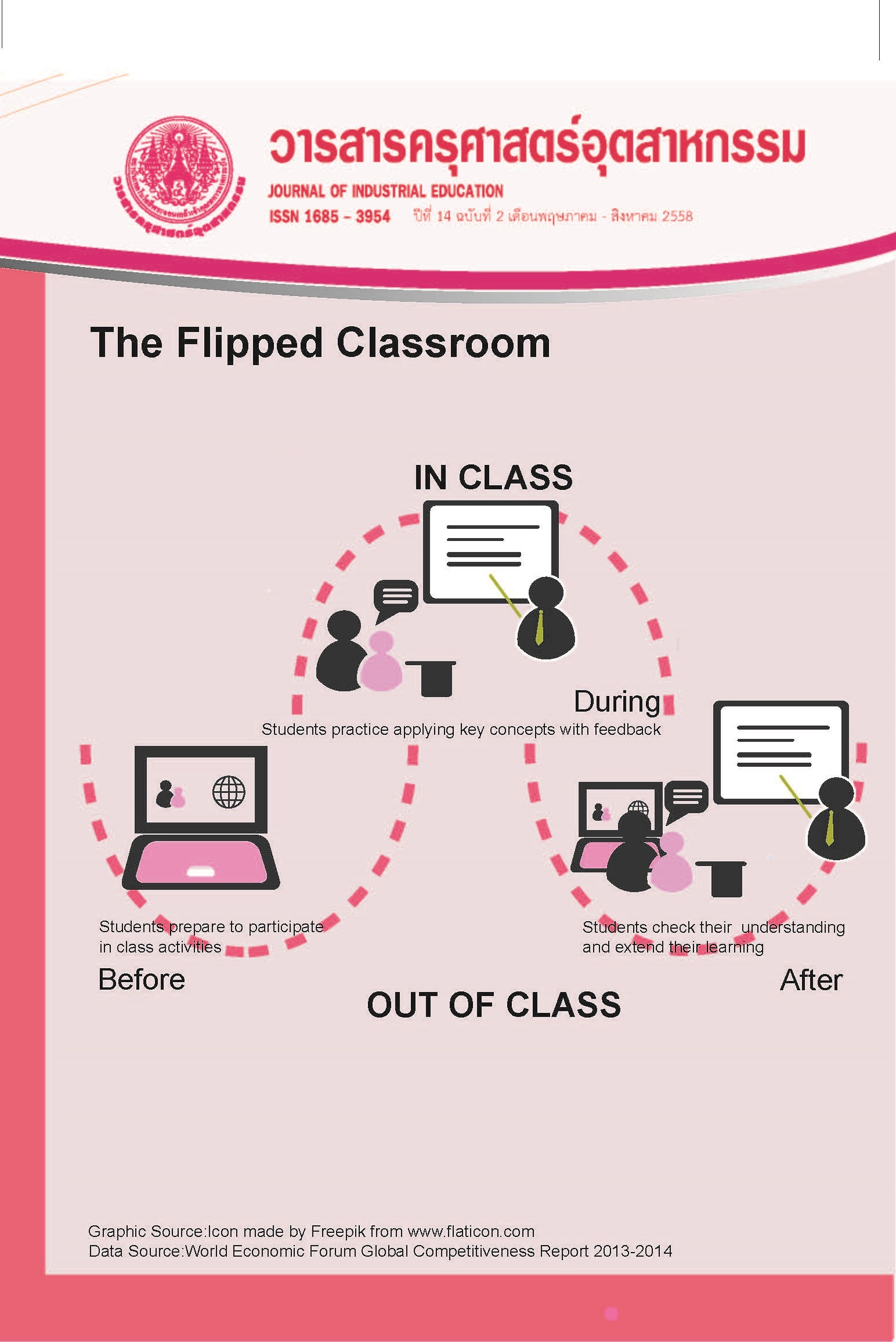An Improvement in Instructional Quality by Applying the DMAIC Process
Main Article Content
Abstract
The purposes of the study were to 1) develop an instructional quality improvement process by applying the DMAIC process 2) investigate the effectiveness of the instructional quality improvement process and 3) study supporting factors, obstructions, and problems of using the instructional quality improvement process. This study was research and development using case study in secondary school. The research procedure was divided into 2 phases; (1) development of an instructional quality improvement process; and (2) the implementation of the instructional quality improvement process which lasted for 16 weeks. The research results were as follows: 1) The instructional quality improvement process was composed of six-step process (1) identifying problems, (2) measuring problem sizes, (3) analyzing problems, (4) selecting solution and implementation, (5) improving solutions, and (6) controlling problem recurrence. 2) Teachers were able to manage all process procedure; the team of mathematics teachers decided to solve only one problem that was students’ lacked mathematical problem solving skills. The main cause of the problems was a lack of preparation and instructional process which enhanced problem solving skills. Teachers solved their problems by using the instructional process which promoted mathematical problem solving skills. There was a supervision and reflection on the teaching to improve the instructional process. Students could learn and develop their mathematical problem solving skills. Students’ average scores on all their mathematical problem solving skills were higher than before the implementation. 3) The factors that supported this process implementation were (1) support from school administrators, (2) continuity of the project planning and monitoring, (3) flexibility of the project management, (4) participatory project management, (5) motivation of teachers in the project, and (6) collaboration of teachers in the project. The problems and obstacles of this process implementation were (1) lack of authority to give orders and negotiate by project manager, (2) this project was conducted for the first time, (3) limitation in context/working culture of teachers, (4) lack of coordination of teachers in the project, (5) high number of school activities, (6) insufficiency of essential knowledge and skills in teachers.
Article Details
"The opinions and contents including the words in papers are responsibility by the authors."
"ข้อคิดเห็น เนื้อหา รวมทั้งการใช้ภาษาในบทความถือเป็นความรับผิดชอบของผู้เขียน"
References
[2] สถาบันส่งเสริมการสอนวิทยาศาสตร์และเทคโนโลยี. 2546. บทสรุปสำหรับผู้บริหารการศึกษา การจัดทำหลักสูตรสถานศึกษา กลุ่มสาระการเรียนรู้คณิตศาสตร์ในโรงเรียนนำร่องการใช้ หลักสูตรการศึกษาขั้นพื้นฐาน. ค้นเมื่อวันที่ 15 พฤษภาคม 2553, จาก https://www.ipst.ac.th/research/resuit46-25.shtml
The Institute for the Promotion of Teaching Science and Technology. 2003. The Executive Summary: The Preparation of the Mathematics Curriculum in School Pilot Curriculum for Basic Education. Retrieved May 15, 2010, from https://www.ipst.ac.th/research/resuit46-25.shtml
[3] ระพิน ฉายวิมลและคณะ. 2549. การศึกษาสภาพและปัญหาการจัดการเรียนการสอนของคณาจารย์ มหาวิทยาลัยบูรพา. วารสารศึกษาศาสตร์, 17(2), น. 105-118.
Chayvimol, R., et al. 2006. The Current Instructional Practices and Problems of Providing Instruction of Instructors at Burapha University. Journal of Education, 17(2), 4p. 105-118.
[4] เสกสรร ทองศรี จรินทร์ ธานีรัตน์ และรัตนะ บัวสนธ์. 2557. การพัฒนารูปแบบการบริหารคุณภาพการศึกษาสำหรับสถานศึกษา สังกัดสำนักงานเขตพื้นที่การศึกษาประถมศึกษา. วารสาร ครุศาสตร์อุตสาหกรรม, 13(2), น. 26-33.
Thongsri, S., Thaneerat, J., and Bausont, R. 2014. Development the Education Quality Administration Model for Schools under the Primary Educational Service Area Office. Journal of Industrial Education, 13(2), p. 26-33.
[5] Kyriakides, L., Combell, R., and Christofidou, E. 2002. Generating Criteria for Measuring Teacher Effectiveness Through a Self-Evaluation Approach: A Complementary Way of Measuring Teacher Effectiveness. School effectiveness and school improvement, 13(3), p. 291-325.
[6] สำนักทดสอบทางการศึกษา. 2557. ผลการประเมินคุณภาพผู้เรียนระดับชาติ ปีการศึกษา 2555 บทสรุปและข้อเสนอแนะเชิง นโยบาย. กรุงเทพฯ: โรงพิมพ์ชุมนุมสหกรณ์การเกษตรแห่งประเทศไทย จำกัด.
[7] โครงการ PISA ประเทศไทย. 2556. ผลการประเมิน PISA 2012 คณิตศาสตร์ การอ่าน และวิทยาศาสตร์ บทสรุปสำหรับผู้บริหาร. สถาบันส่งเสริมการสอนวิทยาศาสตร์และเทคโนโลยี.
[8] Mehrotra, D. 2007. “Six Sigma in Education”. Retrieved June 16, 2011, from https://www.isixsigma.com/library/content/c011029a.asp.
[9] Sallis, E. 2002. Total Quality Management in Education 3rd ed. London: Kogan Page.
[10] เพนดิ, พี. และ โฮล์ป, แอล. 2545. Six Sigma กลยุทธการสร้างผลกำไรขององค์กรระดับโลก. แปลโดย วิทยา สุหฤทดำรง และ ก้องเดชา บ้านมะหิงษ์. กรุงเทพฯ: ท็อป.
[11] กันยรัตน์ คมวัชระ. 2547. การนำ Six Sigma มาประยุกต์ใช้ในการปรับปรุงคุณภาพการศึกษา. วารสารประกันคุณภาพ มหาวิทยาลัยขอนแก่น,5(1), น. 20-34.
Komwachara, K. 2004. Applying Six Sigma in Educational Quality Improvement. Khon Kaen University Quality Assurance Journal, 5(1), p. 20-34.
[12] Breyfogle, F.W. 1999. Implementing Six Sigma: Smarter Solutions Using Statistical Methods. New York: Wiley.

